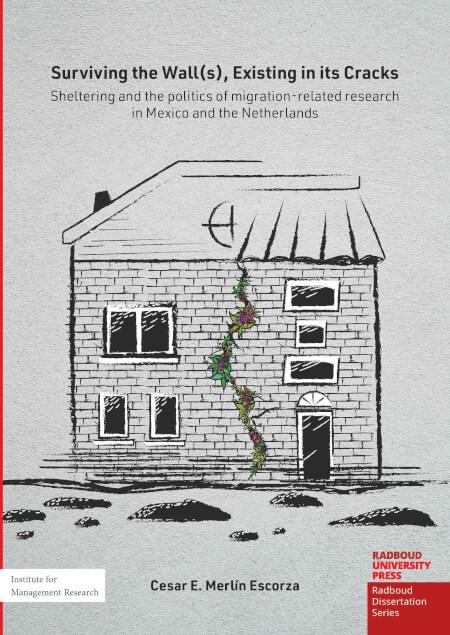Surviving the Wall(s), Existing in its Cracks: Sheltering and the politics of migration-related research in Mexico and the Netherlands
Keywords:
Sheltering, Humanitarianism, Volunteering, Autoethnography, Reflexivity, Critical theory and methodologiesSynopsis
This dissertation presents a study regarding the daily practices of shelter organizations that provide aid and protection to people generally labelled as migrants, refugees and asylum seekers. It is based on (auto)ethnographic fieldwork at two shelter organizations: Casa para Todes, located close to the southern border of Mexico, and Iedereen Welkom, located close to the eastern border of the Netherlands. The study centres on the interactions between individuals encountering at these organizations, framed typically as people receiving assistance and people providing it by working there as volunteers. Theoretically, this dissertation departs from debates that situate shelter organizations within the migration industry, particularly in its rescue branch, operating under the
rationales of humanitarianism and protection of the populations mentioned above. Adding to such scholarship, this study points to the seemingly contradictory quality of shelter organizations' practices and discourses that shift between facilitation and control, care and discipline and freedom and containment. Situated at these intersections, the objective of this dissertation is to understand better the processes shaping shelter organizations' work through an analysis of the manifold elements composing their daily practices, the interactions between the people participating in these and the effects said interactions have in their lives, both inside and outside the shelters' premises. Conceptually, such a constellation of analytical elements is referred here as sheltering. To fulfil its objective, this study aims to answer questions regarding the entanglements between sheltering practices and migration and knowledge regimes in Mexico and the Netherlands. It does so by developing analyses on three dimensions.
The first dimension addresses how both actors encounter in the shelter, considering their interactions both as formal practices of sheltering inside the shelter and informal ones outside it. Here, the analysis gave insights into how sheltering can be understood as relational dynamics where
said opposites, e.g. care and discipline, intersect and entangle with governance structures managing migration. The second dimension analyzes how the mobilities, livelihoods, motivations and aspirations of volunteers and the people assisted by them are entangled through sheltering. Here, the analysis helped in approaching critically the use of labels and categories structuring these actors' relations by revealing the 'plasticity' behind the normalization of their difference and the conviviality that transgressed it. The third dimension looked at the entanglement of sheltering with knowledge creation and social transformation. Here, the analysis helped in understanding how knowledges are created, appropriated and refused throughout sheltering, giving as well insights into the extractive implications of academic migration-related research and its potential for social transformation.
These dimensions are unpacked throughout the nine chapters composing the dissertation, which appear divided into three parts, each corresponding to one dimension. Altogether, these analytical axes provide insights leading to broader topics such as the coloniality of migration and migration as decolonization; critical pedagogy and community organization in relation to border spaces; the use of mixed methods for migration-related research; and the possibilities of existence we might be able to see by looking through the cracks we make to the Wall(s) ordering the world.

Published
Series
Categories
License

This work is licensed under a Creative Commons Attribution-NonCommercial-NoDerivatives 4.0 International License.

